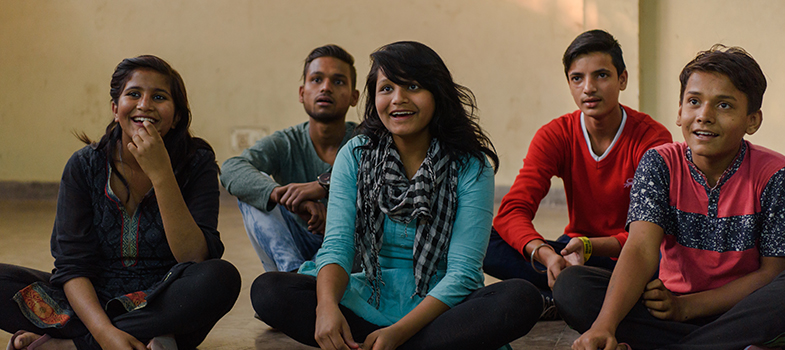5.3 Love scenes
The next activity looks closely at the messages about communication, consent and relationships that we receive through films and other popular media. It is designed to be used within a CSE session but you will probably find it useful to work through the activity yourself first before you use it with a group.
Activity 5.3 Rewrite the love scene
Find an example of a short ‘love scene’ in a popular film or television show. This should not show sex but should be a scene which implies a sexual relationship.
Choose a clip that you would be happy to show in a CSE session. If you are not able to show video you could try to pick a very famous film which the class can call to mind and relate to.
Show the young people the scene and ask them some questions like these:
- What messages is the scene giving the audience about gender and sexuality?
- How do these people communicate about sex and desire?
- Is sex mentioned? If so, do you think they are using condoms or contraception?
- Do you think it shows a positive relationship?
- How likely do you think it is that this love scene will lead to pleasurable sex for both people?
You may wish to add new questions or remove the ones that don’t fit so well with the scene you have chosen.
In the boxes below, for each question we give some suggestions on how to respond to comments and to extend the activity.
What messages is the scene giving us about gender and sexuality?
If the scene relies on gender stereotypes, ask the group to identify these and challenge if they are always true. Love scenes tend to depict men as driving the action, and women as passive – which can give a gender-biased view of sex and relationships. If a different-sex couple is shown, can the young people imagine seeing the same kind of relationship being shown between a same-sex couple? If not, why do they think this is?
How do these people communicate about sex and desire?
Often on screen, a romantic or sexy scene implies that kissing and sex should be silent. We may see a man push a woman up against a wall and kiss her passionately, but they rarely discuss or agree what they are about to do beforehand. In films it is implied that you immediately and automatically know what your partner likes, but in real life you need to communicate to find out.
Do you think they are using condoms or contraception when they have sex? Is this mentioned?
It’s unlikely! One study of 350 UK and US soap operas and comedy shows popular with 16–24 year olds found that only 7% of the sex scenes included discussions of safe sex, and other studies have found similarly low rates. If you would like to read a report about this study, you can find it here: Mis-selling Sex [Tip: hold Ctrl and click a link to open it in a new tab. (Hide tip)]
Ask your group whether they think films and television should include mention of condoms or contraception in love scenes to make them more realistic. Or do they think that this would spoil the romance?
Do you think it is a positive relationship? Why/why not?
This can be a chance to speak about positive relationships and respect. Do they seem to be listening to one another? Do they seem to care about the other person’s feelings? Can the young people in your group spot signs of possible controlling behaviour? For example, if a person is checking someone’s text messages behind their back?
How likely do you think it is that this love scene will lead to pleasurable sex for both people?
Here you could talk about the difference between films or television and real life. The love scene probably implies that both people will have pleasurable sex. But if this was real life, do they think they would both experience pleasure? How could talking about their feelings and desires help them to have more pleasurable sex?
Make some notes about how you could rewrite this scene to make consent and communication clearer? Could you add some dialogue to the script? Before they kiss, or walk off into the bedroom, what could they say to each other? Could you add some non-verbal communication?
Now split the young people up into small groups and ask them to write down some suggestions for ways to rewrite this scene to make consent and communication clearer. What dialogue could you add to the script? Before they kiss, or walk off into the bedroom, what could they say to each other? You could give some examples to help them get started like:
“I’d love to kiss you – would you like that?”
“How do you like to be kissed?”
“Before we go through to the bedroom, have you got any condoms?”
You could also ask them to think about the ways in which consent can be communicated non-verbally. For example, they could include body language which shows consent in their script e.g. ‘she smiles at him and leads him toward the bedroom’.
Ask each group to choose one thing that would make the most difference to the scene, and ask one person from that group to tell the class.
5.2 Practising consent through handshakes

